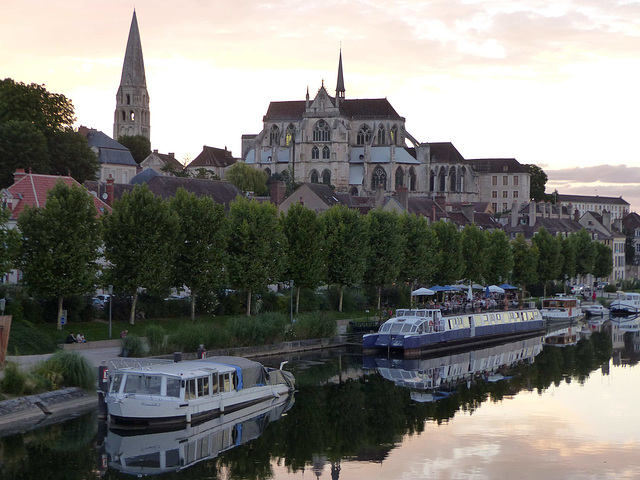Auxerre
Auxerre - Cathédrale Saint-Étienne d'Auxerre
Auxerre - Cathédrale Saint-Étienne d'Auxerre
Auxerre - Cathédrale Saint-Étienne d'Auxerre
Auxerre - L'Yonne
Auxerre - L'Yonne
Auxerre - La scène des quais
Chevannes - Saint-Pierre-Saint-Paul
Chevannes - Saint-Pierre-Saint-Paul
Chevannes - Saint-Pierre-Saint-Paul
Chevannes - Saint-Pierre-Saint-Paul
Diges - Saint Martin
Gy-l’Évêque - Saint-Phal
Gy-l’Évêque - Saint-Phal
Gy-l’Évêque - Saint-Phal
Gy-l’Évêque - Saint-Phal
Auxerre - Saint-Germain d’Auxerre
Auxerre - Saint-Étienne d'Auxerre
Auxerre - Saint-Étienne d'Auxerre (PiP)
Auxerre - Saint-Étienne d'Auxerre
Auxerre - Saint-Étienne d'Auxerre
Auxerre - Saint-Étienne d'Auxerre
Auxerre - ELÉGANZA
Auxerre - Cathédrale Saint-Étienne
Auxerre - Tour de l’Horloge
Auxerre - Di Napoli
Auxerre - Abbaye Saint-Germain d'Auxerre
Auxerre
Villeneuve-l’Archevêque - Notre Dame
Villeneuve-l’Archevêque - Notre Dame
Villeneuve-l’Archevêque - Notre Dame
Villeneuve-l’Archevêque - Notre Dame
Villeneuve-l’Archevêque - Notre Dame
Villeneuve-l’Archevêque - Notre Dame
Villeneuve-l’Archevêque - Notre Dame
Villeneuve-l’Archevêque . Notre Dame
Villeneuve-l’Archevêque . Notre Dame
Villeneuve-l’Archevêque . Notre Dame
Saint-Florentin- Saint-Florentin
Saint-Florentin- Saint-Florentin
Saint-Florentin- Saint-Florentin
Saint-Florentin- Saint-Florentin
Saint-Florentin- Saint-Florentin
Saint-Florentin- Saint-Florentin
Saint-Florentin- Saint-Florentin
Saint-Florentin- Saint-Florentin
Saint-Florentin- Saint-Florentin
Saint-Florentin- Saint-Florentin
Saint-Florentin - Saint-Florentin
Ligny-le-Châtel - Lavoir
Ligny-le-Châtel - Saint-Pierre-et-Saint-Paul
Ligny-le-Châtel - Saint-Pierre-et-Saint-Paul
Ligny-le-Châtel - Saint-Pierre-et-Saint-Paul
Ligny-le-Châtel - Saint-Pierre-et-Saint-Paul
Ligny-le-Châtel - Saint-Pierre-et-Saint-Paul
Ligny-le-Châtel - Le Relais Saint Vincent
Ligny-le-Châtel - Le Relais Saint Vincent
Ligny-le-Châtel - Le Relais Saint Vincent
Auxerre - Cathédrale Saint-Étienne
Auxerre - Cathédrale Saint-Étienne
Auxerre - Cathédrale Saint-Étienne
Auxerre - Cathédrale Saint-Étienne
Auxerre - Cathédrale Saint-Étienne
Auxerre - Cathédrale Saint-Étienne
Auxerre - Cathédrale Saint-Étienne
Auxerre - Cathédrale Saint-Étienne
Auxerre - Cathédrale Saint-Étienne
Auxerre - Cathédrale Saint-Étienne
Auxerre - Cathédrale Saint-Étienne
Auxerre - Cathédrale Saint-Étienne
Auxerre - Cathédrale Saint-Étienne
Auxerre - Cathédrale Saint-Étienne
Auxerre - Cathédrale Saint-Étienne
Auxerre - Cathédrale Saint-Étienne
Auxerre - Cathédrale Saint-Étienne
Auxerre - Cathédrale Saint-Étienne
Auxerre - Cathédrale Saint-Étienne
Auxerre - Cathédrale Saint-Étienne
Auxerre - Cathédrale Saint-Étienne
Auxerre - Cathédrale Saint-Étienne
Auxerre - Cathédrale Saint-Étienne
Vézelay - Sainte-Marie-Madeleine
Saint-Père - Notre-Dame (PiP)
Sens - Cathedral
Sens - Cathedral
Sens - Cathedral
Sens - Cathedral
Sens - Cathedral
Location
See also...
Keywords
Authorizations, license
-
Visible by: Everyone -
All rights reserved
-
51 visits
Auxerre - Abbaye Saint-Germain d'Auxerre


Auxerre was a Gallo-Roman centre, then called Autissiodorum. Here the Via Agrippa crossed the Yonne river. It became the seat of a bishop[ already in the 3rd century. In the 5th century, it received a cathedral.
Wine cultivations starting from the twelfth century made Auxerre a flourishing town. Auxerre suffered during the Hundred Years' War and the Wars of Religion. In 1567 it was captured by the Huguenots, and many of the Catholic edifices were damaged.
The former Abbaye Saint-Germain d'Auxerre was founded by Bishop Germain d'Auxerre (Germanus of Auxerre). The first building here was an Oratory dedicated to St. Maurice. Hhere Bishop Germain was buried in 448. About 500 a basilica was erected, funded by Queen Clotilda, wife of Clovis. A Benedictine monastery existed, when in 850 Abbot Conrad, brother-in-law of Louis the Pious, had a crypt built. The abbey reached the apex of its cultural importance during the Carolingian era.
Fires destroyed large parts of the abbey in the 11th and 12th centuries, but the Merovingian nave was rebuilt. In 1277 Abbot Jean de Joceval commissioned a new Gothic building, which was worked on until 1398 without being completed.
The monastery was looted and partially destroyed by Huguenots in 1567. It got secularized in 1810 and partially demolished the following year. The nave was reduced to its Gothic parts. As a result of this, only the southern tower of the Romanesque double tower facade has been preserved - without connection to the basilica.
In 1927, 9th century frescoes were discovered under the crypt´s 17th-century frescoed plaster walls. They may be the oldest such murals in France - and it is not allowed to take any photographs.
Wine cultivations starting from the twelfth century made Auxerre a flourishing town. Auxerre suffered during the Hundred Years' War and the Wars of Religion. In 1567 it was captured by the Huguenots, and many of the Catholic edifices were damaged.
The former Abbaye Saint-Germain d'Auxerre was founded by Bishop Germain d'Auxerre (Germanus of Auxerre). The first building here was an Oratory dedicated to St. Maurice. Hhere Bishop Germain was buried in 448. About 500 a basilica was erected, funded by Queen Clotilda, wife of Clovis. A Benedictine monastery existed, when in 850 Abbot Conrad, brother-in-law of Louis the Pious, had a crypt built. The abbey reached the apex of its cultural importance during the Carolingian era.
Fires destroyed large parts of the abbey in the 11th and 12th centuries, but the Merovingian nave was rebuilt. In 1277 Abbot Jean de Joceval commissioned a new Gothic building, which was worked on until 1398 without being completed.
The monastery was looted and partially destroyed by Huguenots in 1567. It got secularized in 1810 and partially demolished the following year. The nave was reduced to its Gothic parts. As a result of this, only the southern tower of the Romanesque double tower facade has been preserved - without connection to the basilica.
In 1927, 9th century frescoes were discovered under the crypt´s 17th-century frescoed plaster walls. They may be the oldest such murals in France - and it is not allowed to take any photographs.
- Keyboard shortcuts:
Jump to top
RSS feed- Latest comments - Subscribe to the comment feeds of this photo
- ipernity © 2007-2024
- Help & Contact
|
Club news
|
About ipernity
|
History |
ipernity Club & Prices |
Guide of good conduct
Donate | Group guidelines | Privacy policy | Terms of use | Statutes | In memoria -
Facebook
Twitter

Sign-in to write a comment.